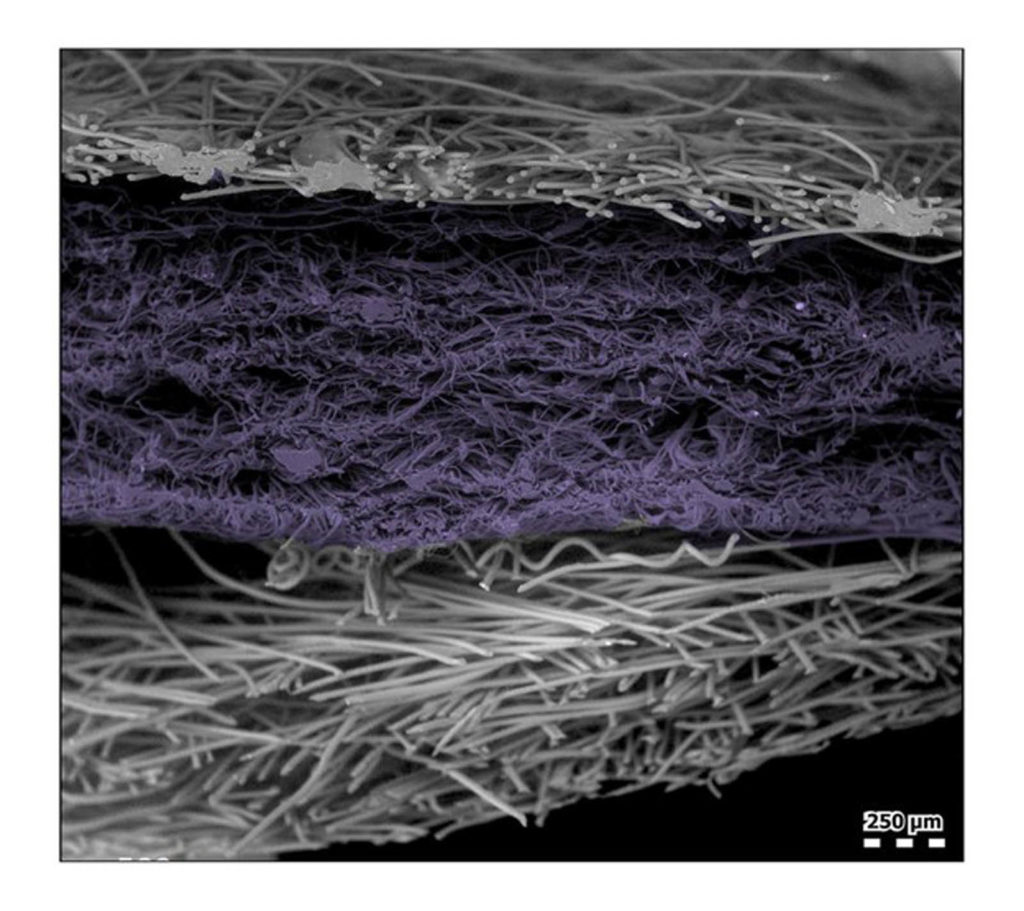
A team of researchers at the National Institute of Standards and Technology (NIST) recently studied the masks people have been wearing to slow the spread of COVID-19. The masks work by blocking some of the virus-filled droplets and smaller particles called aerosols that an infected person exhales. They also offer some protection to the wearer by filtering incoming air. The researchers wanted to know how well different fabrics filter out those particles and what makes some fabrics better filters than others.
Their research indicates that that cotton fabrics tend to perform better than synthetics, with cotton flannels being particularly effective. After being exposed to the moisture in a person’s breath, cotton fabrics perform better still. Fabric masks do not capture all of the aerosols, but they capture many of them, which slows the spread of the disease.
As part of this research, one team member, Edward Vicenzi, used a scanning electron microscope to examine the fabrics up close. Vicenzi works at the Smithsonian’s Museum Conservation Institute, where he studies the history and origin of objects in the museums’ collection, and he is a visiting researcher at NIST.
Vicenzi’s images gave the scientists important insights into the particle-filtering properties of different fabrics and help us understand more clearly how masks work to protect us. NIST scientists are still working to gain a better understanding of the filtration properties of mask fabrics. As people continue to wear fabric masks to limit the spread of COVID-19, or if the need should arise again in the future, these tiny details will help.
 TEXTILES.ORG
TEXTILES.ORG


